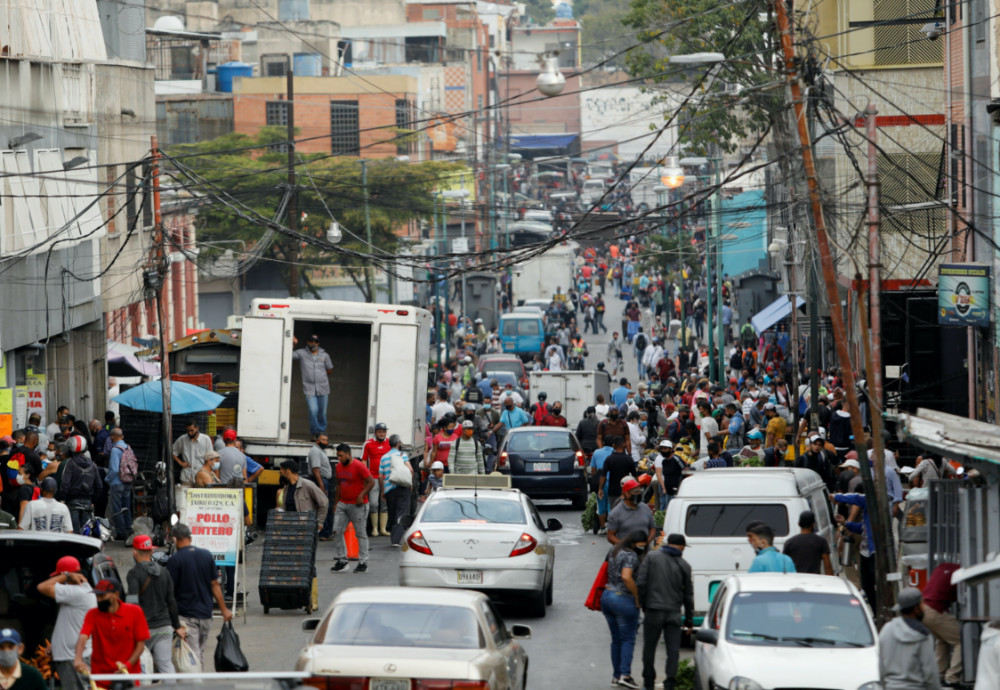Cordero/Caracas, Venezuela
Reuters
Twelve-year-old Moises Bracamonte knows how to prepare fertiliser and water the black beans and corn that his family grows in Venezuela’s western Tachira state. He says the most difficult part of agricultural work is “breaking the ground” to sow the seeds without a tractor or an ox.
“Why is it difficult with a pick? Because the pick is heavy, and you have to do a lot of picking if you have a lot of seeds,” he said in an interview in the living room of his house in Cordero, a town some 800 kilometres south-west of Caracas.

People walk on a busy commercial street amid a spike in infections of the coronavirus disease (COVID-19) that has led the government to extend lockdown measures, in Caracas, Venezuela, on 6th April. PICTURE: Reuters/Leonardo Fernandez Viloria/File photo.
With schools closed and no access to internet, he and his 11-year-old brother Jesus help their father, also named Moises, 58, grow the food that provides for their family, something they almost never did before the coronavirus pandemic.
Coronavirus quarantine measures have boosted the number of children in the workforce in Venezuela, according to child protection activists in the South American nation, which faces a deep economic crisis that has worsened in the last five years.
The child labour problem has been fueled by a mass migration of more than five million Venezuelans that turned many children into breadwinners for their families, according to researchers.
“[The pandemic] has aggravated the risk factors for child labour,” said Carlos Trapani, coordinator of Cecodap, a non-profit group focused on violence prevention and children’s rights. The work ranges from toiling in garbage dumps to agricultural fields, he said, adding that children in rural areas are more likely to be dependent on public assistance and are at greater risk of being recruited by gangs.
As of 2020, at least 830,000 Venezuelan children and adolescents were living without one or both parents due to migration, according to a Cecodap report published in December.
“Sometimes there are no adults because they have left the country and teenagers end up in charge of the family group,” said Leonardo Rodriguez of Casas Don Bosco, which works with disadvantaged youth.
Venezuela does not provide statistics on child labour.
The country’s information ministry and the state child protection agency IDENNA did not reply to requests for comment.
World Vision, a global Christian humanitarian organisation, conducted a survey of 420 households in Caracas and the neighbouring state of Miranda in August, 2020, to determine how the pandemic had affected the risks faced by children. Respondents were those aged 30 and over, of which 71 per cent were women.
“The problems that put children at greater risk during the pandemic are associated with food shortages, increased child labor…domestic violence and neglect,” World Vision said in the study, which was released in November.
Since the onset of the pandemic, more children are doing housework for other families in exchange for money or food and more of them are begging and selling products such as water or cigarettes in the streets, according to the study.
The United Nations Economic Commission for Latin America and the Caribbean and the UN’s International Labor Organization, estimated in June that the impact of the pandemic could push more than 300,000 Latin American children and adolescents into the workforce, adding to the 10.5 million who are already part of it.




